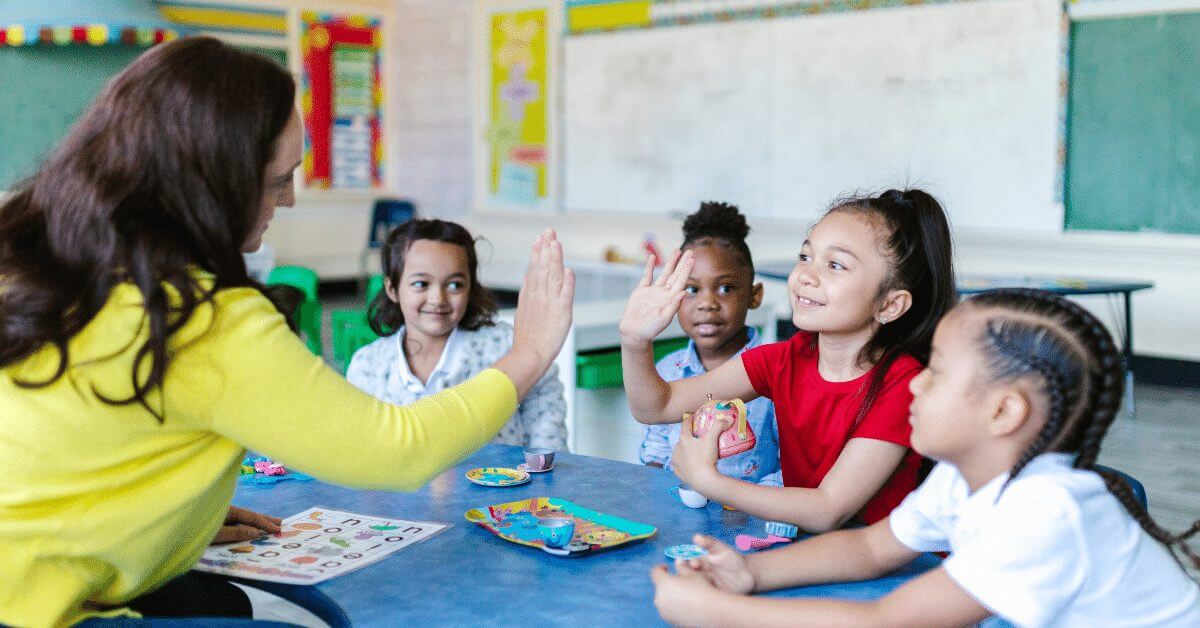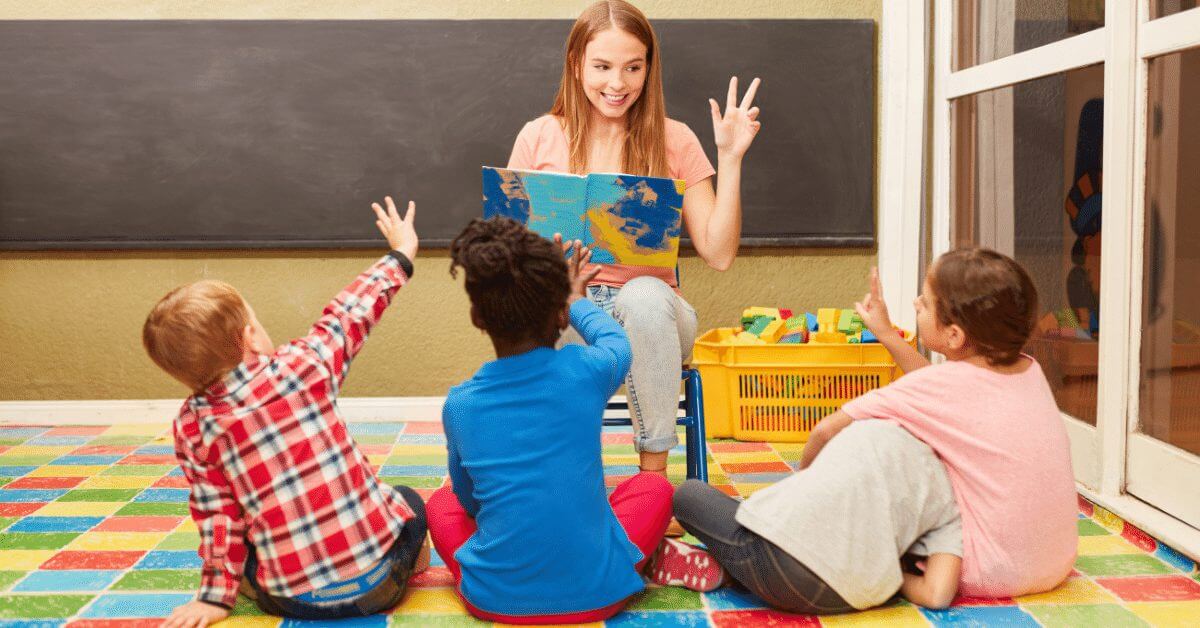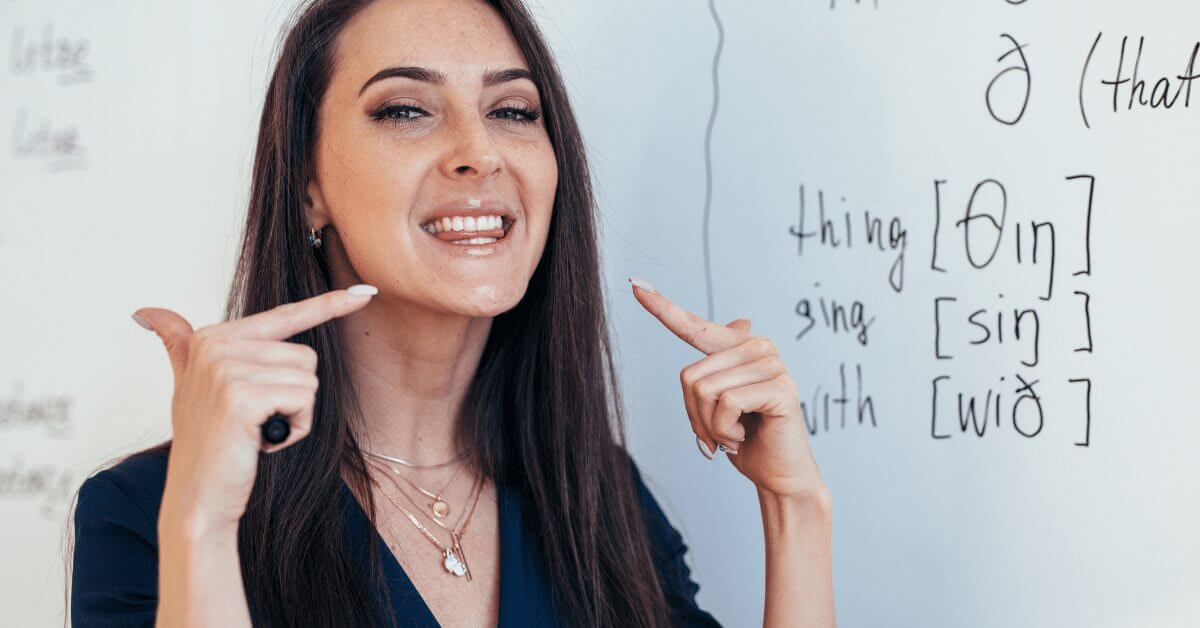We often hear that children are the best mimics; they absorb language like sponges and repeat like parrots. And it is true that they are often open to learning and experimenting with other languages as they are still learning and experimenting with their first language. So, as Young Learner teachers it is our responsibility to harness this ability and this enthusiasm for new language. As a general rule when teaching Very Young Learners (VYL) our key focus is solely on speaking and listening skills. These are innate skills that come naturally to us unlike the learnt skills of reading and writing. First, children listen and respond through activities that test receptive skills before moving on to spoken production. Hearing these sounds and words is not a passive activity and lots is going on behind the scenes. We know that pronunciation is a physical act and studies seem to point to the fact that the younger we are when we hear new sounds the more able we are to produce them accurately.
YL teachers do a lot of pronunciation work without necessarily calling it pronunciation work. All YL lessons usually involve plenty of drilling, both chorally and individually. Vocabulary and chunks are repeated loudly, quietly and in silly voices and this happens lesson after lesson. It is this exposure and the repeated practice of these lexical items or chunks that results in language acquisition. Children aren’t usually embarrassed like adults can be and are happy to keep repeating the same word or chunk as long as it is done in a variety of entertaining ways. Another key component of YL lessons are songs and music and target language is often chanted, jazzed up or sung. By using their sense of rhythm and a recognisable tune, longer chunks can be memorised and reproduced more easily. This not only aids pronunciation of individual words but enables children to reproduce longer chunks of natural sounding language using features of connected speech, such as weak forms in ‘heads, shoulders, knees and /ən/ toes’ or intrusive sounds in ‘If you’re happy /j/ and you know /w/ it clap your hands’ for example, without being aware they are doing so. And what’s a YL lesson without a great story? Children will happily hear a favourite story again and again and begin to memorise parts, particularly repetitive frames ‘did Pete cry? Well, goodness no!’ or rhyming chunks such as ‘I don’t care said the bear with his nose in the air!’

So, what if we used this skill to assist in an area that children find a lot more difficult? Early literacy skills and the first stages of reading and writing are a challenge even to native English speakers. We don’t have a lovely phonetic language such as Italian but a mish-mash of rules and exceptions that can leave children baffled. However, if our Young Learners are confident about their pronunciation they can use this as a springboard to help develop their reading and writing skills at word level. By this I mean creating tasks and activities which allow them to play with the language, explore and, with support from the teacher, begin to work out patterns and rules in pronunciation and spelling.
I’m a big fan of using synthetic phonics and have used Jolly Phonics materials with six-year-olds in Italy. But whilst this has been shown to be a generally successful programme for native English speakers, there are some drawbacks in an ELT context. Time is one, but the biggest can be meaning. Much of the vocabulary used in the Jolly Phonics programme is obscure or advanced for young language learners. Even in the group one wordlist there are lexical items such as sap and tip and past verb forms such as sat. That’s not to say that this material can’t be used, but it is important to select carefully (e.g. sit not sat and ant not sap) and grade the language appropriately.

Going back to those songs and stories, good quality rhyming stories can also be a great resource here. There are lots of simple stories out there without overly complicated language but I do particularly love anything by Julia Donaldson. Her stories have such a great rhythm and flow. They are, of course, written for native speakers so you will need to use a certain amount of scaffolding: working first on comprehension using visual clues, then pronunciation before moving on to literacy work. Being an authentic text, the students will not understand the whole story on the first reading but this will not necessarily impede enjoyment; children don’t understand every word of stories in their own language but they still get a lot of pleasure out of them. Students may well also be familiar with very famous stories, such as The Gruffalo, as they have been translated into many languages. If not, the beautiful illustrations will help with comprehension as will scaffolding provided by the teacher, such as simple comprehension checking questions. Target vocabulary can also be pre-taught using flashcards, materials and the context of the story itself. During reading you can point to individual words as you read to nurture early reading skills. This can help raise awareness of the relation, or lack thereof, between spellings and sounds.
Songs can be those classics children’s’ songs or nursery rhymes that they know inside out but you can also start to include some age-appropriate pop songs to engage older YL. The main thing is that they enjoy the song or rhyme and that they are confident with the pronunciation before you go on to analyse the language.

Here are a few practical ideas you can try out in the classroom
- Use the Jolly Phonics big books and songs to introduce students to the sounds of individual letters, digraphs and trigraphs using stories and songs before moving on to letter formation. You can start by focusing on letter combinations and sounds that are different to those in their L1. Each lesson can focus on a new sound then students can brainstorm words they know that use this sound.
- Revise a few recent lexical sets and then ask students to categorise them based on first letter sounds. Let children do a ‘free’ drawing, including any of the revised words, then label it with the first letter sounds.
- Begin to develop strategies for reading unknown words. Make charts to categorise words using a base word they are familiar with. For example, classifying diphthongs such /aʊ/ /eɪ/ and /əʊ/ but categorising them as words that have the sounds of animals owl, snake and toad or colours brown, grey and yellow.
- Analyse well-known stories or songs for spelling patterns. Find the /eɪ/ /uː/ and /eə/ sounds in the story ‘I don’t care! said the bear’ How many different types of spelling can you find that makes this sound? Can you add any other words you know to these columns?
- Magic ‘e’ – make a chant that demonstrates the rule e.g. ‘The cat is on the mat and Kate is my mate!’ As my name includes the ‘magic e’ this works well for me. We then compare cat and Kate and mat and mate to show what ‘magic e’ can do. In pairs they then categorise words in two columns e.g. lake, game, late, bat, Sam, Pat, gate, whale, fat, dad, date. We then go on to work on other vowel sounds changed by ‘magic e’.
- Alphablocks – This is a CBeebies show where phonetic friends get together and make words. The images help give meaning to the words and there is lots of repetition of sounds. As episodes are only short it makes a good warmer, filler or ending to a lesson.
- Phonic sounds bingo. Prepare bingo boards with selection of individual letter sounds or digraphs. The teacher, or another student reads out words. The students tick off their cards if they hear a word with their sound.
- Tongue twisters – get your mouth round tricky sounds by inventing silly tongue twisters – Theo is thirsty because he has three throats
- Make vocabulary books or picture dictionaries and record words based on their sounds.
Working out patterns and rules also begins to develop ‘learning to learn’ competencies as it helps with developing cognitive skills such as memorising, classifying, comparing and hypothesising. Teaching children strategies such as these can develop autonomy and provide children with the ability to learn outside of the classroom. This is really one of the most important things we can do in order to promote lifelong language learning.

Kate Knight is a freelance Teacher Trainer based in the UK. She started her ELT career in 2007 first as a teacher, then Senior Teacher, Young Learner Coordinator, and Director of Studies. In her various academic management roles she has served as a mentor for hundreds of teachers. She is most passionate about teaching children and teenagers and is the main course tutor on both the IH VYL and IH CYLT. She is both CELTA and DELTA-qualified.
